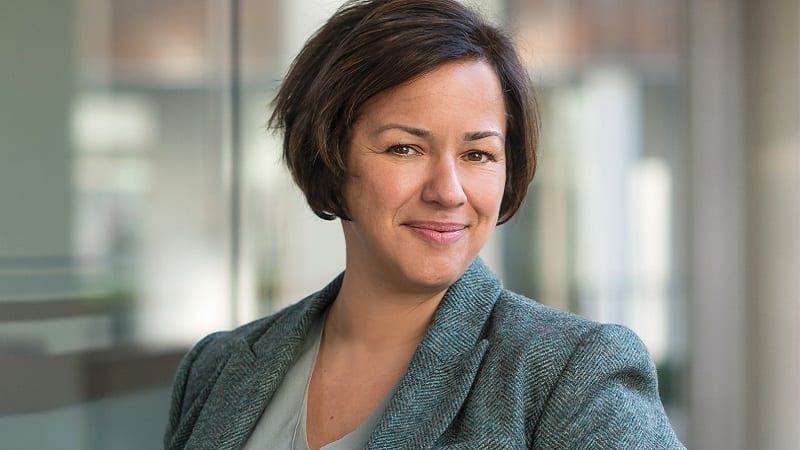Fund houses like M&G and Schroders have been turning to wealth management as a way of reinvigorating their businesses amid sluggish asset growth and falling revenues but it is unclear whether other traditional managers will follow suit.
Compared with wealth managers, traditional fund groups are facing more daunting structural headwinds.
Lower for longer rates and weak investment performance have driven client money from active vehicles into alternatives and passive funds, culminating in slower AUM growth, while low-fee products and greater regulatory scrutiny on transparency and value for money have added to revenue pressure, according to analysts at Citi.
These trends have been exacerbated due to Covid and are likely to accelerate, the investment bank says.
By contrast it is far more constructive on UK wealth management companies given the “large market, strong structural growth drivers and high quality and relatively more defensible revenue margins” despite the near-term Covid and Brexit headwinds.
AJ Bell head of active portfolios Ryan Hughes adds that frequently more investment activity is being implemented via solutions rather than buying individual funds and this is also forcing fund groups to look for alternative methods of raising AUM.
Hard to promote funds without captive distribution base
One way traditional fund groups have found to combat these issues is by broadening their distribution networks by buying up wealth managers and platforms.
In late September M&G burst onto the wealth management scene launching a £28bn business formed off the back of its acquisition of platform Ascentric.
Schroders began its push into the wealth management space in 2013 after acquiring blue-blooded Cazenove Capital. Since then it has ramped up its efforts further, forming Schroders Personal Wealth in a joint venture with Lloyds in 2018 in a bid to target the mass affluent. This year it also acquired £2.2bn London family office Sandaire.
“If you’re a fund manager and you don’t have a captive distribution base then it’s harder to promote and market your funds — even if you’ve got good performance,” Fundscape chief executive Bella Caridade-Ferreira (pictured) says.
“The net effect of that trend is that fund companies (and life companies, platforms, advice firms and DFMs) move into other parts of the value chain to try and guarantee distribution and hold onto more of the revenues.”
CWC Research managing director Clive Waller says that unlike the US where fund managers can sell directly to clients, “in the UK we like a broker”, whether that be an adviser, platform or discretionary manager, which can offer a basket of funds.
End game is to ‘secure the entire value chain’
The ultimate end game is to wind up like Quilter which has “secured the entire value chain,” Caridade-Ferreira says. The FTSE 250 wealth manager which had an existing platform has been highly acquisitive in the advice space, snapping up IFA networks like Intrinsic, Positive Solutions and Lighthouse.
“The in-house advisers use its platform, its funds and DFM services, keeping all the revenues in the family,” Caridade-Ferreira says.
M&G is playing a similar game, she thinks, by acquiring platform Ascentric which will be used to showcase its funds “at an exclusive price”.
Waller says SPW is more of a hybrid model or a “bancassurer plus”. Thus far it has struggled to generate the same kind of momentum as Schroders’ wealth management arm, taking in just £0.1bn in net inflows over the first six months of the year amid the coronavirus crisis compared with Cazenove’s £0.8bn.
Unclear whether more fund houses will buy DFMs
Despite the appeal of enhancing distribution and revenue streams Numis Securities director of equity research Bill Barnard says it is difficult to tell whether the recent examples of asset managers buying wealth businesses will become a trend.
“I think all the good asset managers (i.e. smaller, specialist, good performance and distribution) are targeting the wealth managers as a source of new business, whereas buying one outright and stuffing it with your own products doesn’t really work anymore from a regulatory perspective,” Barnard says.
Though some firms have struggled to grow their asset management arms, for others, including Rathbones, it is still the fastest growing part of their business, he notes.
Fund groups are still being seen as attractive M&A targets as well.
Morgan Stanley, which is now the largest asset manager in the US with $2trn in AUM, paid $7bn in cash last week for Boston fund house Eaton Vance.
Other fund groups have settled on acquiring rival firms as a way of growing their businesses while reducing costs.
Jupiter acquired Merian in July which took its AUM to £59.2bn after factoring in the market hit from the coronavirus crisis and outflows during H1 2020. Liontrust’s spate of acquisitions, which includes Architas’ UK business, Neptune and the sustainable team from Alliance Trust Investments, have seen it catapult into the FTSE 250 and recently smash through the £20bn AUM barrier.
SJP and Quilter should have resilient operating margins
“Clearly buying a much less volatile earnings stream could have its advantages,” Barnard says.
“The question I suspect is getting scale in order to get the operating margin, and the wealth managers seem to be trying to end up at 20-25%, whereas a good asset manager should see a higher one.
“That said, a good platform should be higher and that is essentially one of the strengths of St James’s Place’s model,” he adds. SJP’s operating margin was around 42.7% in 2019 and analysts at Citi predict the FTSE 100 wealth manager along with Quilter will have the most resilient margins across the entire UK wealth management sector.
Citi predicts the winners in the traditional asset management space will be niche managers like Man Group and Ashmore that are focused on less commoditised areas, firms which can compete at a lower cost due to scale or platform efficiency like Amundi or have a “genuinely differentiated and strong distribution network with a captive consumer base” to protect flows and margins like Amundi and DWS.










